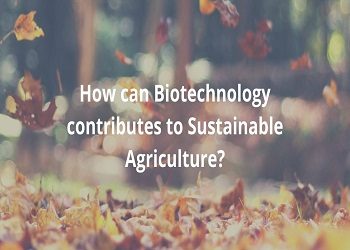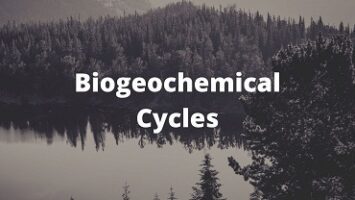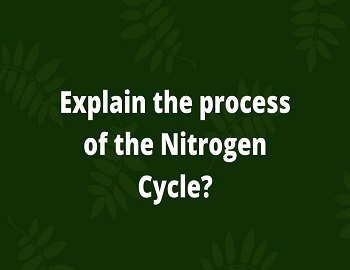Table of Contents
How can Biotechnology contributes to Sustainable Agriculture?
What is Sustainable Agriculture?
It is the practice of obtaining optimum agricultural yield as per changing human needs while maintaining or enhancing the quality of the environment and conserving natural resources through judicious management of available resources. Sustainable agriculture comprises watershed management, integrated weed management, integrated pest management, integrated nutrient management, and conservation of genetic resources.
Biotechnology contributes to Sustainable Agriculture:
Biotechnology contributes to sustainable agriculture by developing Biofertilizers, Biopesticides, disease & insect resistant varieties, and single-cell proteins.
Biofertilizers:
These are the living organisms that bring about soil nutrient enrichment due to their biological activity. The main sources of biofertilizers are bacteria, cyanobacteria (blue-green algae), and fungi. Symbiotic bacteria like Rhizobium are found in the root nodules of legumes and they bear the capability of fixing atmospheric nitrogen. The free-living Azotobacter can fix atmospheric nitrogen and make it available to crops. Similarly, some cyanobacteria (Anabaena Azollae) form symbiotic associations with the fern Azolla. Insoluble forms of soil phosphorous are converted into soluble forms by certain microorganisms. This makes phosphorous available to the plants. Mycorrhiza is the symbiotic association of fungal hyphae and the roots of higher plants usually gymnosperms. These fungi solubilize phosphorous, produce plant growth-promoting substances, and protect host plants from soil pathogens.
Biofertilizers are a low-cost input and they do not pollute the environment. They also reduce the dependence on chemical fertilizers.
Biopesticides:
These are biological agents that are used for the control of weeds, insects, and pathogens. The microorganisms used as biopesticides include viruses, bacteria, fungi, protozoa, and mites. Some of them are being used even on a commercial scale.
For example- the soil bacterium Bacillus thuringiensis (Bt) acts as a biopesticide. The spores of this bacterium produce the insecticidal Cry protein which kills the larvae of certain insects. The commercial preparation of Bacillus thuringiensis contains a mixture of spores, Cry protein, and an inert carrier. The use of biopesticides is reducing the application of chemicals and ultimately helping in sustainable agriculture development.
Disease and Insect Resistant Varieties:
Genetic Engineering has enabled the development of crop varieties that are resistant to certain insects and diseases. This approach has produced virus-resistant varieties of crops and efforts are being made to produce varieties resistant to diseases caused by bacteria and fungi as well. The development of disease and insect-resistant varieties has been expected to minimize the use of chemicals for their control and as a result, pollution.
Single Cell Protein:
Single Cell Protein (SCP) is microbial biomass rich in high-quality protein. These serve as valuable food and feed supplements. It reduces the pressure on agricultural production systems for the supply of the required proteins. In addition, SCP production based on industrial effluents helps reduce environmental pollution.









Comments (No)